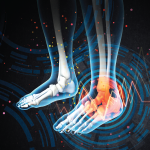 A European study of patients with rheumatoid arthritis (RA) who were in remission evaluated the effect of reducing their stable dose of conventional synthetic disease-modifying anti-rheumatic drugs (csDMARDs) by half. The study evaluated how this reduction affected the risk of flare and compared the half-dose strategy with continuing csDMARDs without reduction.
A European study of patients with rheumatoid arthritis (RA) who were in remission evaluated the effect of reducing their stable dose of conventional synthetic disease-modifying anti-rheumatic drugs (csDMARDs) by half. The study evaluated how this reduction affected the risk of flare and compared the half-dose strategy with continuing csDMARDs without reduction.
Siri Lillegraven, MD, MPH, a senior researcher at Diakonhjemet Hospital, Oslo, Norway, and colleagues documented fewer flares in the stable-dose group, a finding that does not support treatment with half-dose therapy. They published their results online May 4, 2021, in JAMA.1
ACR vs. EULAR Guideline
Alireza Meysami, MD, a rheumatologist in the Henry Ford Health System, Detroit, who is not affiliated with the study, thinks this study answers an important question about reducing the dose of csDMARDs from the dose used to obtain RA remission. He explains that the 2021 ACR Duideline for the Treatment of RA recommends the starting doses of DMARDs, but does not suggest a tapering strategy.2 In contrast, EULAR recommendations suggest rheumatologists consider tapering csDMARDs in patients with RA who are in persistent remission with the treatment.3 Not only are the two recommendations inconsistent, but they leave rheumatologists with the concern that tapering the dose may result in the patient experiencing a flare. Indeed, the Tapering Strategy in Rheumatoid Arthritis (TARA) trial found a 33% flare rate over one year when tapering csDMARDs in patients who previously had controlled disease.4
“We do have a great plan to start patients on treatment,” says Dr. Meysami. “In RA, the cornerstone of the treatment is regulating or even suppressing the immune system. … A lot of patients express concerns, however. They ask, ‘How long are we going to continue the medications? Could I get by with a lower dose?’”
This study addresses when and how to stop these medications.
Study Design
The randomized, open-label study included 160 patients with RA who had been in remission for 12 months. These patients had no swollen joints and fulfilled a set of remission criteria that included an extensive joint examination. They were receiving stable csDMARD therapy: most of the patients (82%) were on monotherapy with methotrexate; 10% were on methotrexate, sulfasalazine and hydroxychloroquine; and 8% were on other monotherapies or duo therapies. None of the patients were on biologic treatments. The investigators randomly assigned patients to receive a half-dose of csDMARDs or continue their stable dose of csDMARDS.


